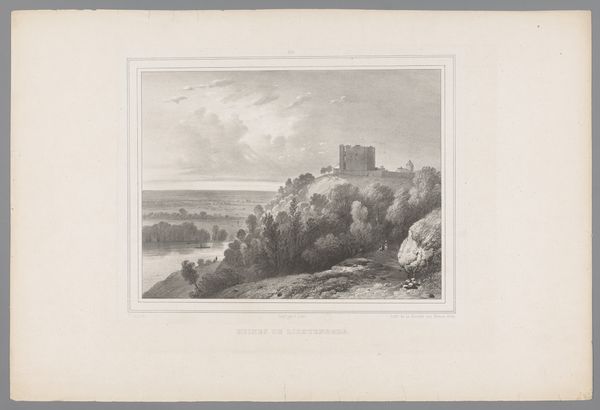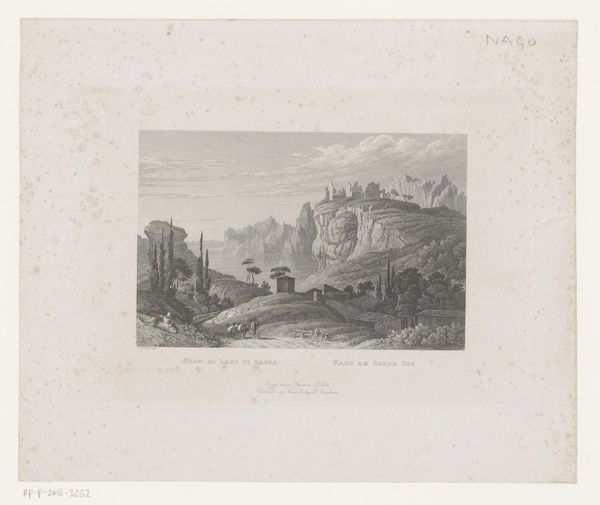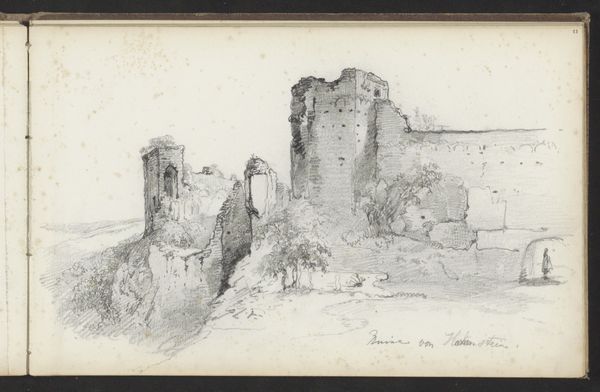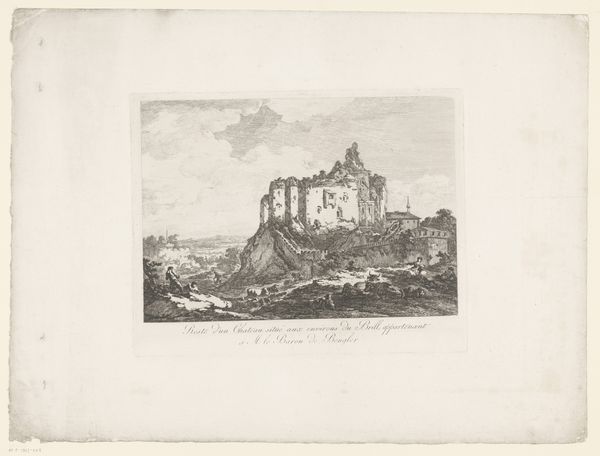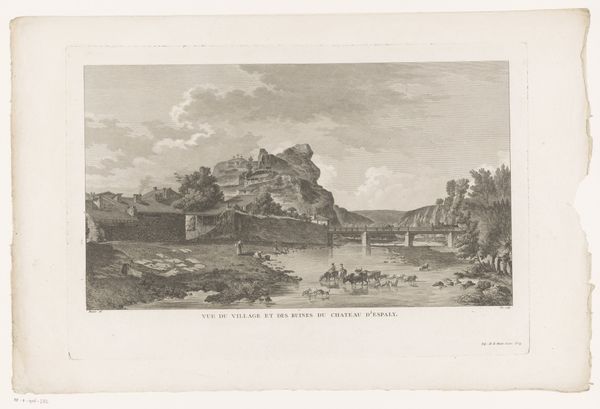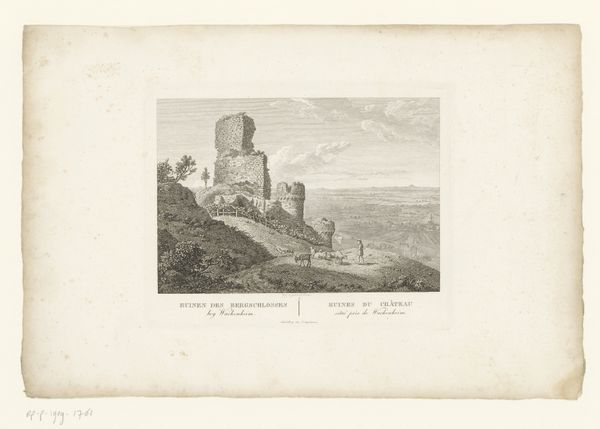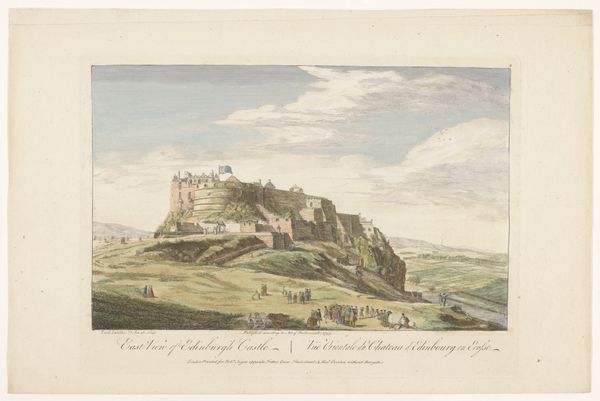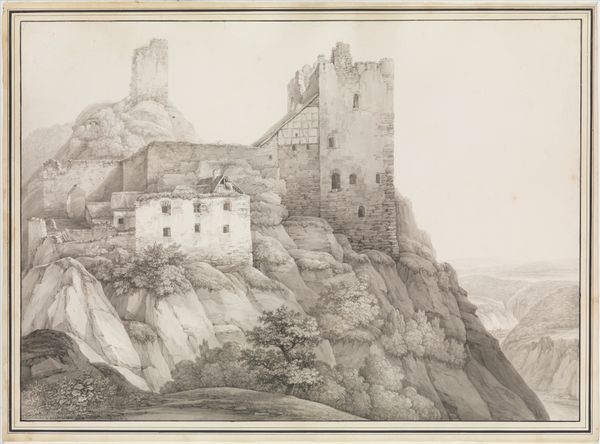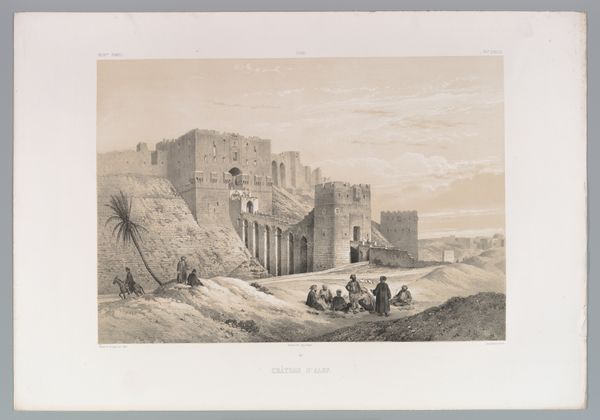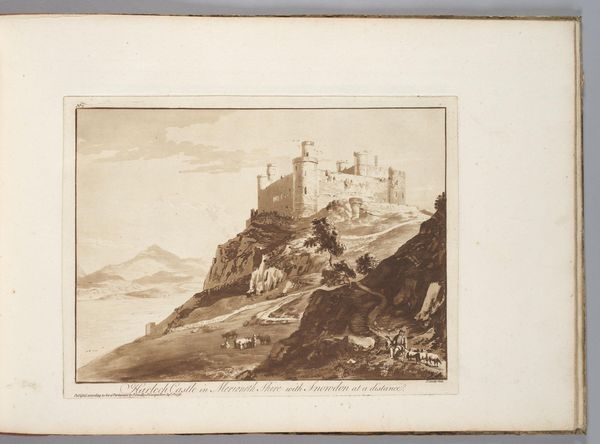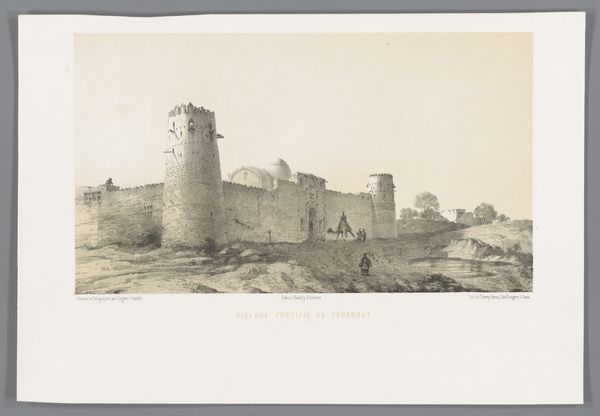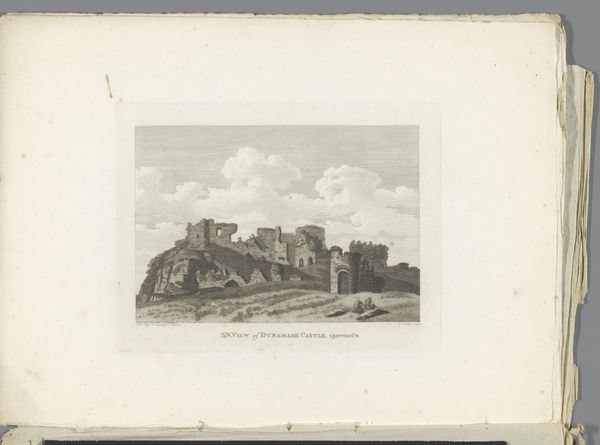
drawing, paper
#
faded colour hue
#
drawing
#
aged paper
#
homemade paper
#
paper non-digital material
#
pale palette
#
pale colours
#
light coloured
#
landscape
#
white palette
#
paper
#
orientalism
#
pale shade
#
watercolor
Dimensions: height 411 mm, width 577 mm
Copyright: Rijks Museum: Open Domain
This lithograph of the castle of Izadkhvast was created by Eugène Flandin in the 19th century. Flandin employed lithography, a printmaking technique, using a stone or metal plate with a smooth surface. The image was drawn on the plate with a greasy substance, and then treated with acid. The lithographic process has imbued the artwork with a sense of replicability, which echoes the industrial revolution, alongside a hand-crafted feel, reflecting the artist’s skill and direct involvement in the making. The monochromatic palette emphasizes the texture of the stone and the precision of the drawing, highlighting the architectural details of the castle and the ruggedness of the landscape. Understanding the lithographic process enhances our appreciation of Flandin’s work, underscoring the convergence of artistic skill and industrial techniques. It challenges the traditional hierarchy between fine art and craft, inviting us to consider the social and cultural significance embedded within the artwork's materiality and production.
Comments
No comments
Be the first to comment and join the conversation on the ultimate creative platform.
